
Key Points
- Technology and Communication Services are in Bearish Trends
- Energy and Utilities Remain the Best of the Bunch
- Industrials and Financials See Their Relative Trends Improve
- Staples are Defensive Port in the Storm
- Discretionary Is on the Radar, Trading at Support
Visiting the Sector Relatives
Information Technology
The Technology sector has fallen below the rising 50-day moving average after being turned away at the falling 200-day moving average. The door is now open for a possible test of the June lows. We find it hard to make a compelling bullish case on the group if it is below the 200-day.
Relative to the S&P 500
The relative trend has broken below the 50-day moving average as it trades below price-based resistance. An undercut of the June lows would solidify the group’s position as an underperformer.
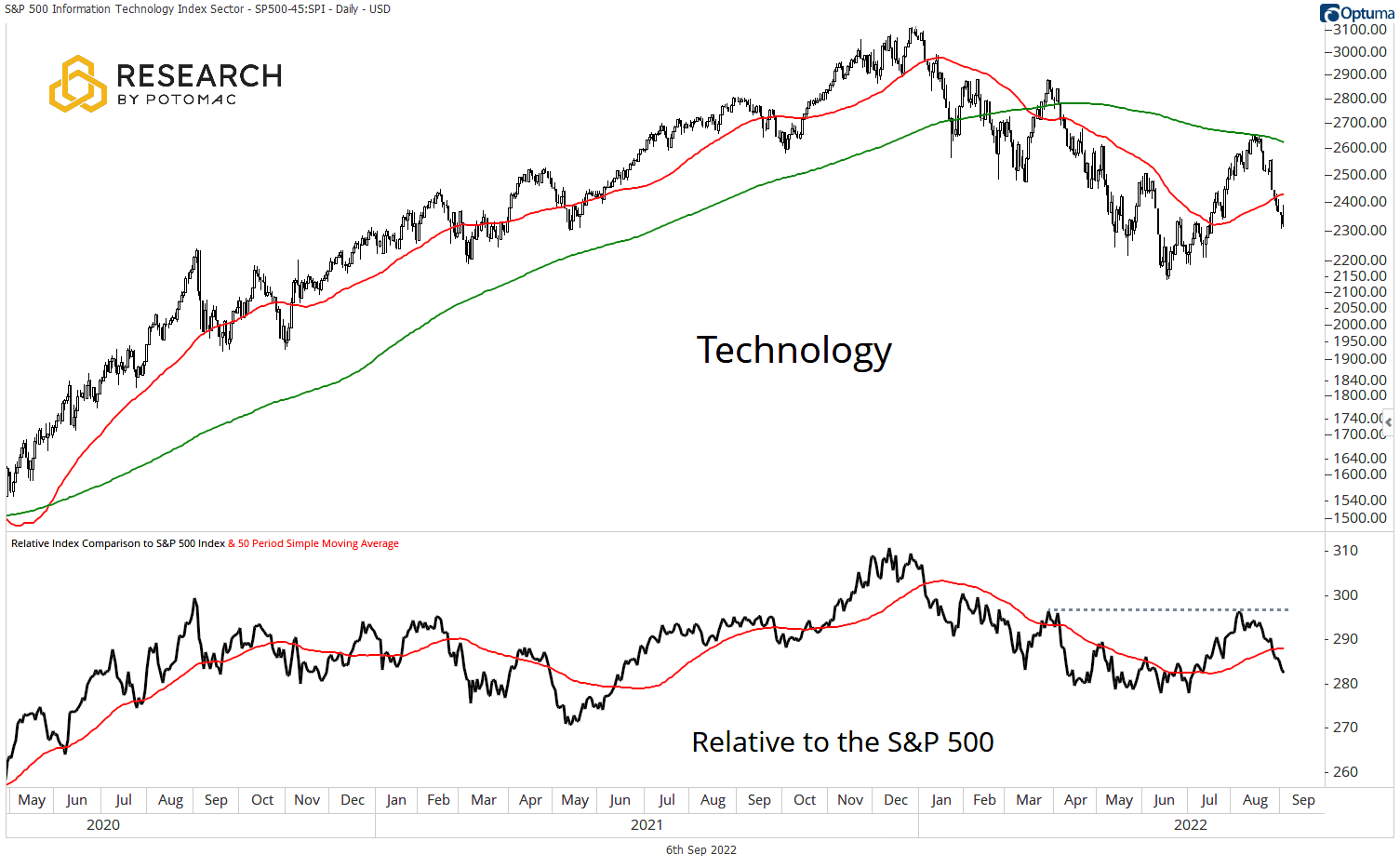
Consumer Discretionary
The Consumer Discretionary sector is wrestling with support and the 50-day moving average while trading well below the declining 200-day moving average. Holding above 1,200 is key for the bull to avoid a retest of the June lows.
Relative to the S&P 500
On a relative basis, Discretionary remains in consolidation with support near the rising 50-day moving average and resistance around the February/March peaks.

Communication Services
The Communication Services sector remains below price-based support and the 50-day moving average as it trades well below the declining 200-day moving average. The June lows are in play for this group which accounts for more than 8% of the S&P 500.
Relative to the S&P 500
The relative trend is below the 50-day moving average, trading close to all-time lows.
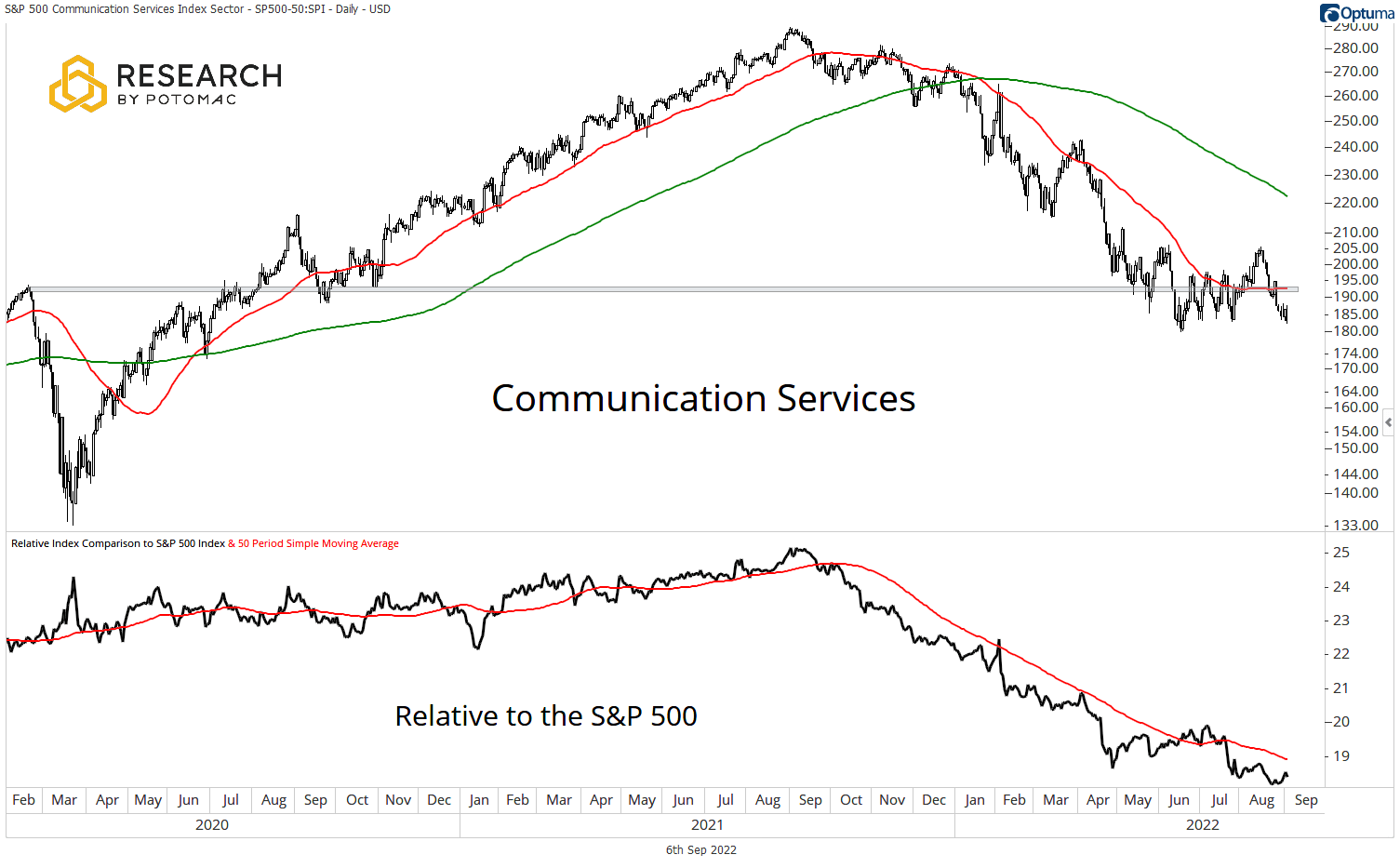
Materials
The Materials sector has broken below the 50-day moving average and price-based support. The declining 200-day moving average points to a deteriorating long-term trend.
Relative to the S&P 500
On a relative basis, the group remains less bad than its peers as it holds above support. However, we find it hard to make a strong case for leadership with the ratio below the declining 50-day moving average.
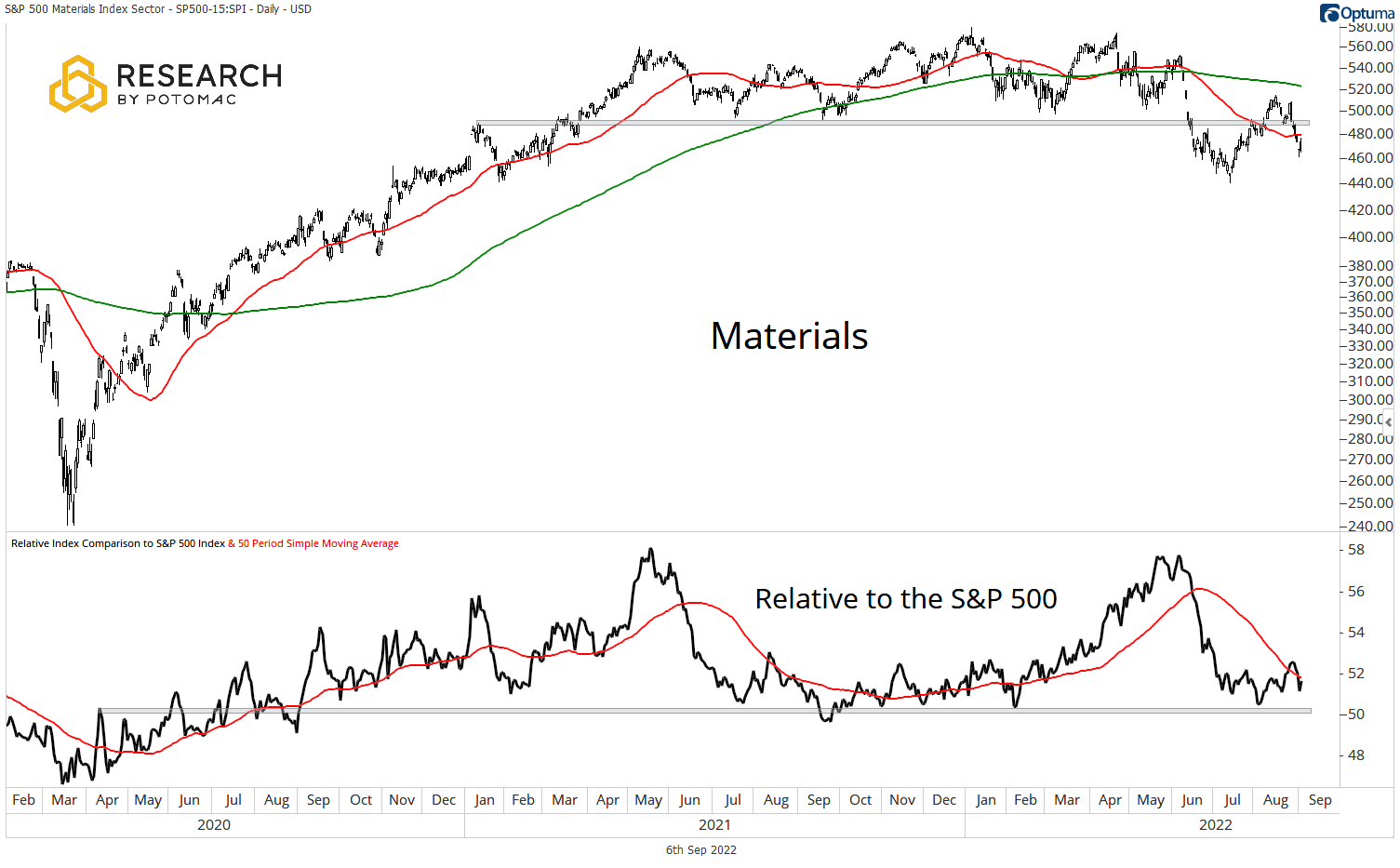
Financials
Financials are dancing with the 50-day moving average as they trade above price-based support at the pre-COVID highs. The declining 200-day moving average points to a weakening long-term trend.
Relative to the S&P 500
On a relative basis, the ratio is beginning to move above resistance, and the 50-day moving average as the group has been “less bad” lately.
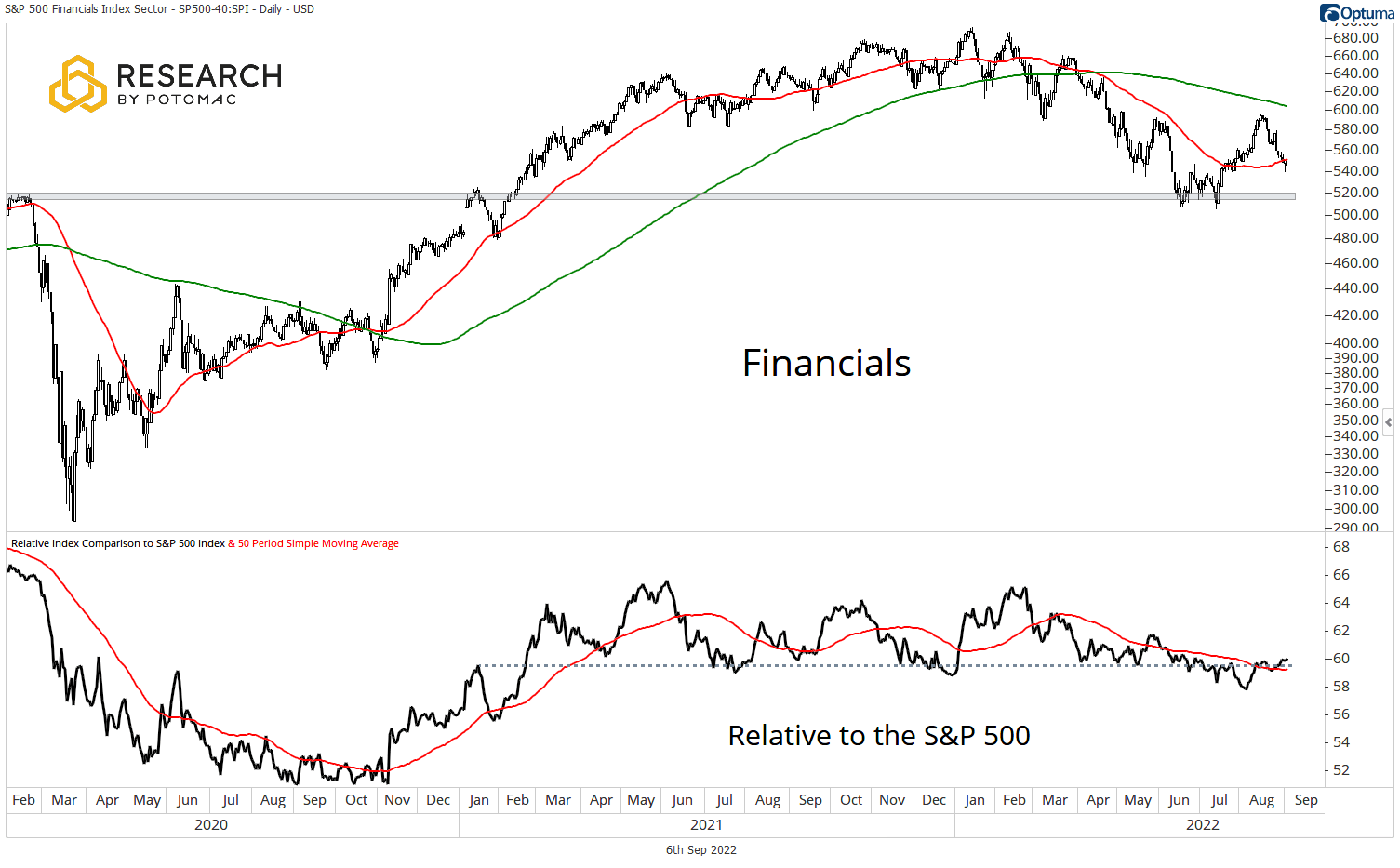
Industrials
Industrials asked the 50-day moving average to dance as it traded below the declining 200-day moving average. There is price-based support at the June lows. Below that, there is not much to hold the group up.
Relative to the S&P 500
The relative trend continues to grind higher, above the 50-day moving average. There is resistance just overhead, but the series of higher lows tilts the odds in favor of a breakout.
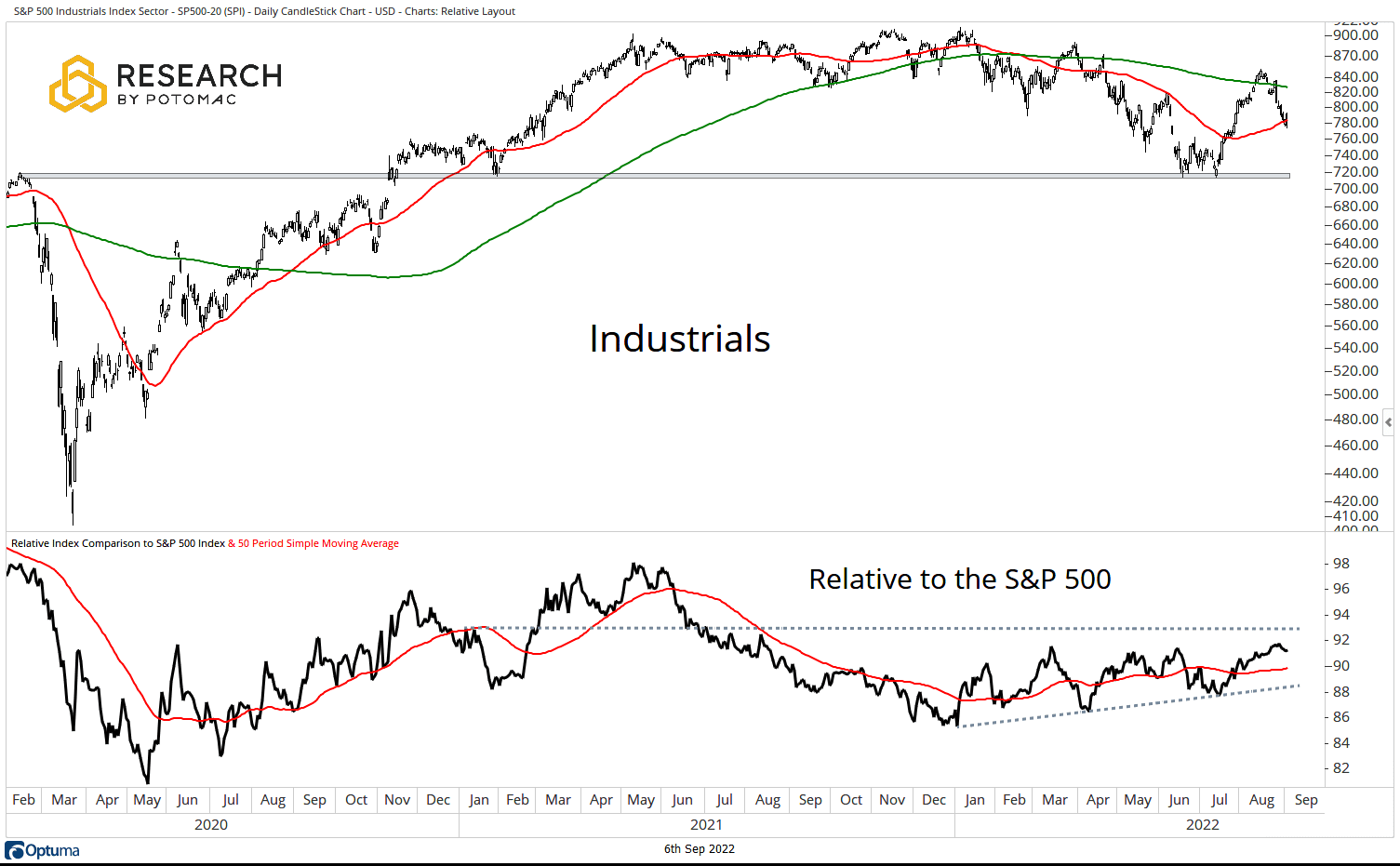
Energy
The Energy sector continues to trade above the 50 and 200-day moving averages. There is price-based support near 530. Above these levels, there are increased odds that the June highs will be tested.
Relative to the S&P 500
The group remains a leader with the ratio above the 50-day moving average and near the June peak.
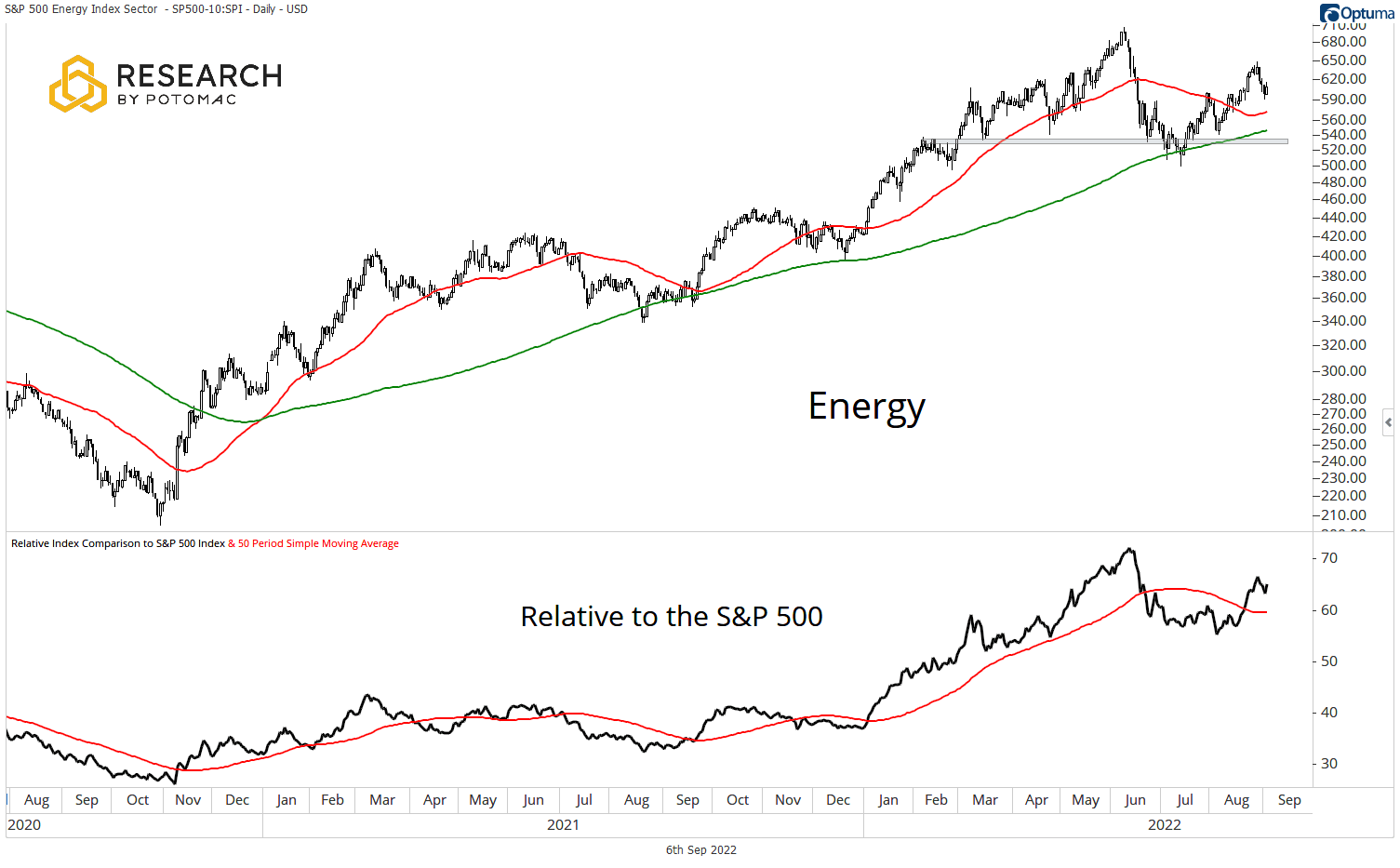
Consumer Staples
Staples have lost the 50-day moving average as they continue to trade in consolidation below the rising 200-day moving average. Holding above the June lows keeps the uptrend from the COVID bottom in place.
Relative to the S&P 500
The relative trend remains in a near-term consolidation but has been improving over the past week. The ratio is above support and is beginning to clear the 50-day moving average. Put this sector in the “less bad” camp.
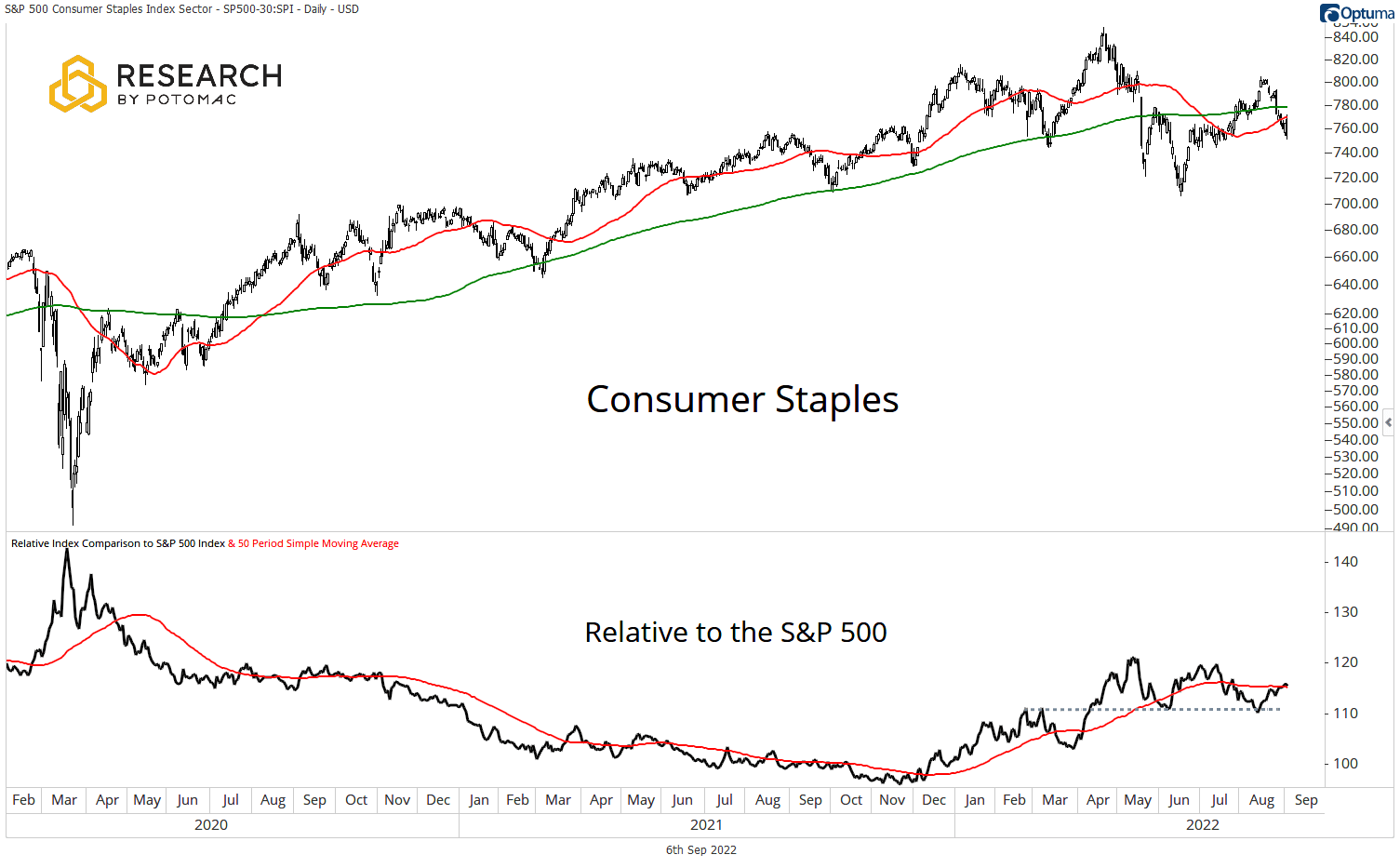
Utilities
Utilities remain above the rising 50 and 200-day moving averages, maintaining the long-term uptrend from the COVID lows. Above 360, odds favor new highs for this defensive sector.
Relative to the S&P 500
The relative trend is holding above the 50-day moving average as it moves toward price-based resistance. A breakout would increase the odds of further outperformance.
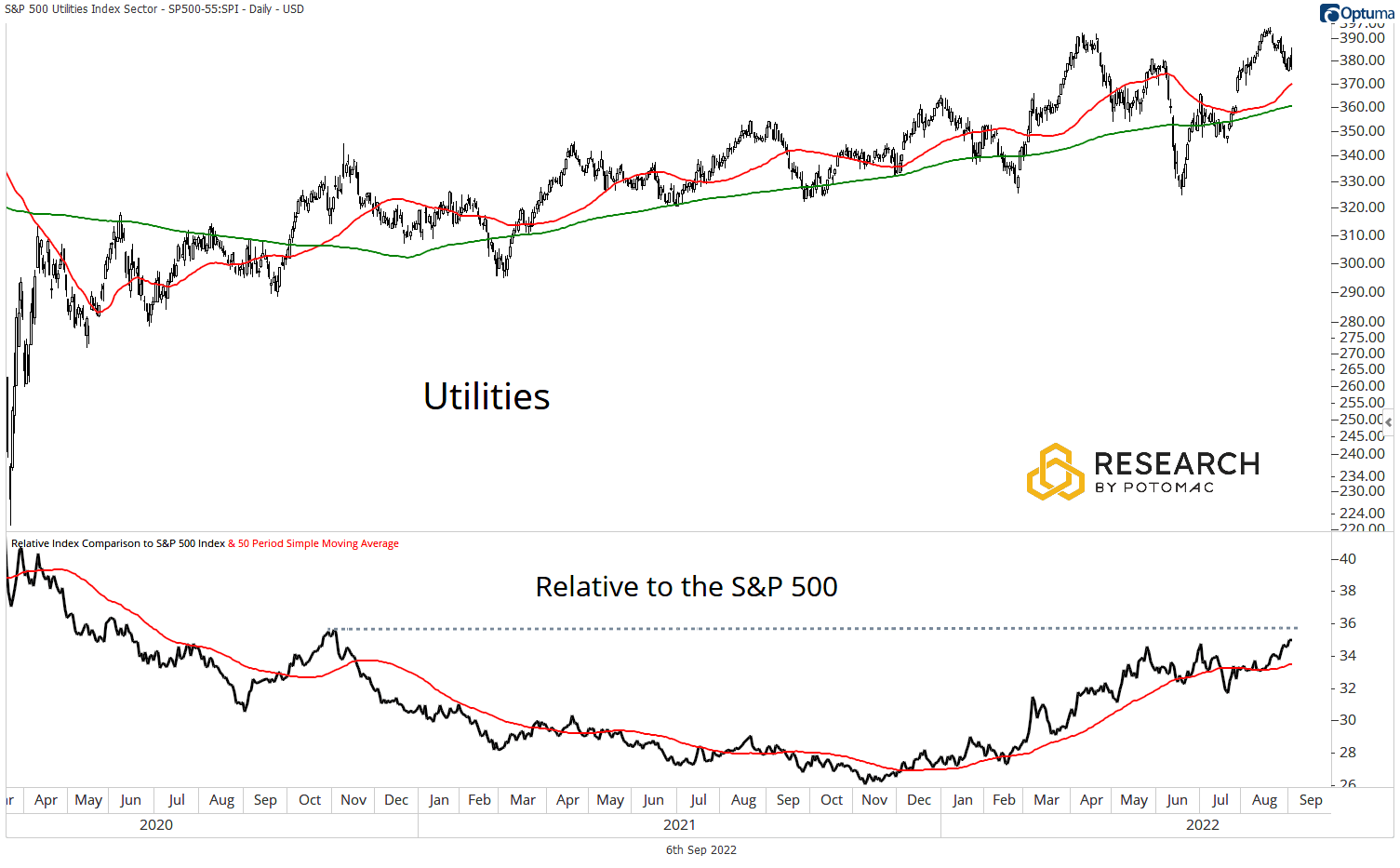
Health Care
Health Care is testing support after breaking below the 50-day moving average. The 200-day moving average is beginning to decline, a sign that the long-term trend is turning bearish.
Relative to the S&P 500
The relative trend remains below the 50-day moving average but is holding above price-based support. Regaining the 50-day would set the stage for further outperformance.
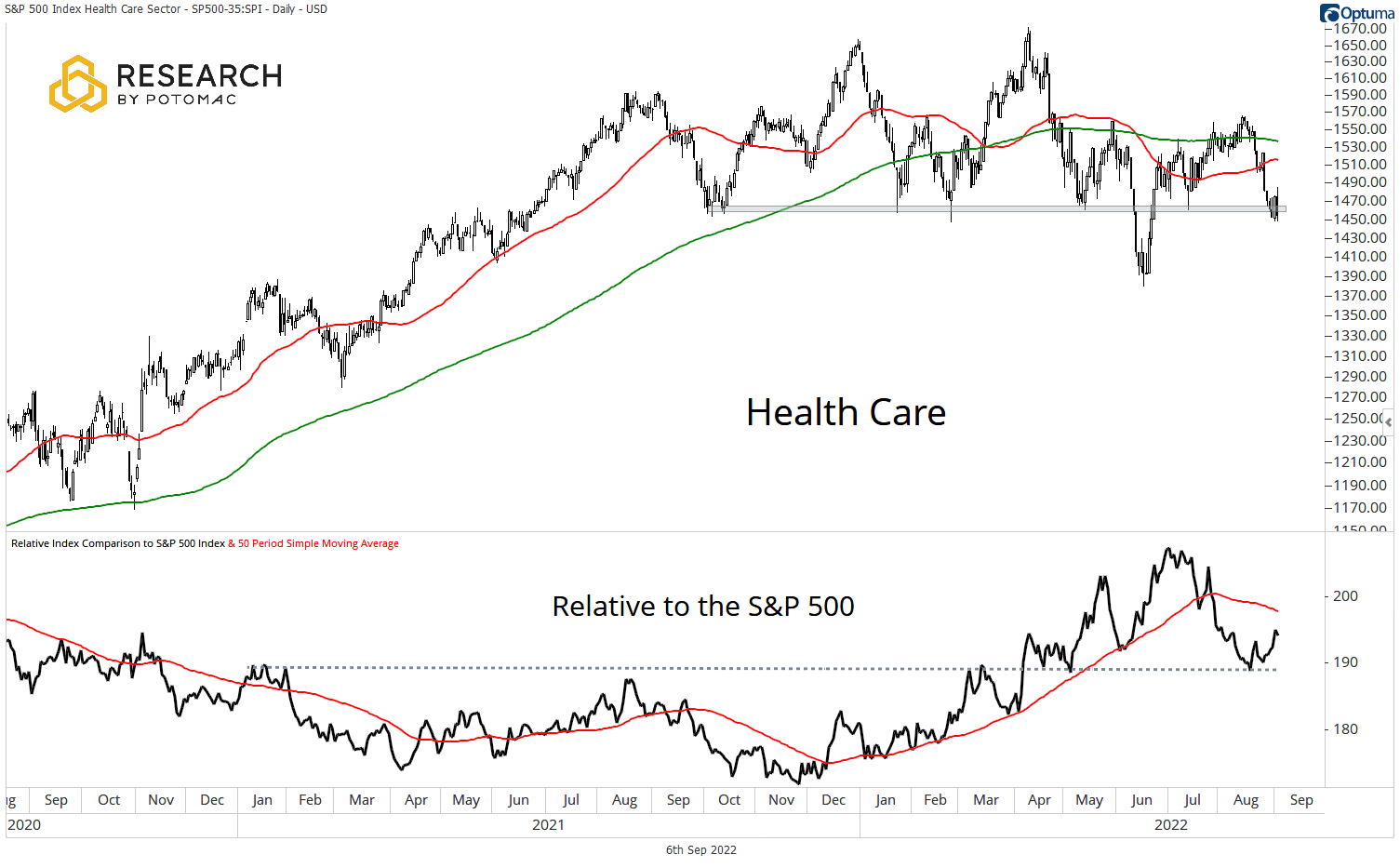
Real Estate
Real Estate is testing price-based support at the pre-COVID highs while trading below the 50 and 200-day moving averages. Below 260, the door is open to the 210 level.
Relative to the S&P 500
On a relative basis, the group is in a neutral trend, oscillating around the 50-day moving average below resistance.
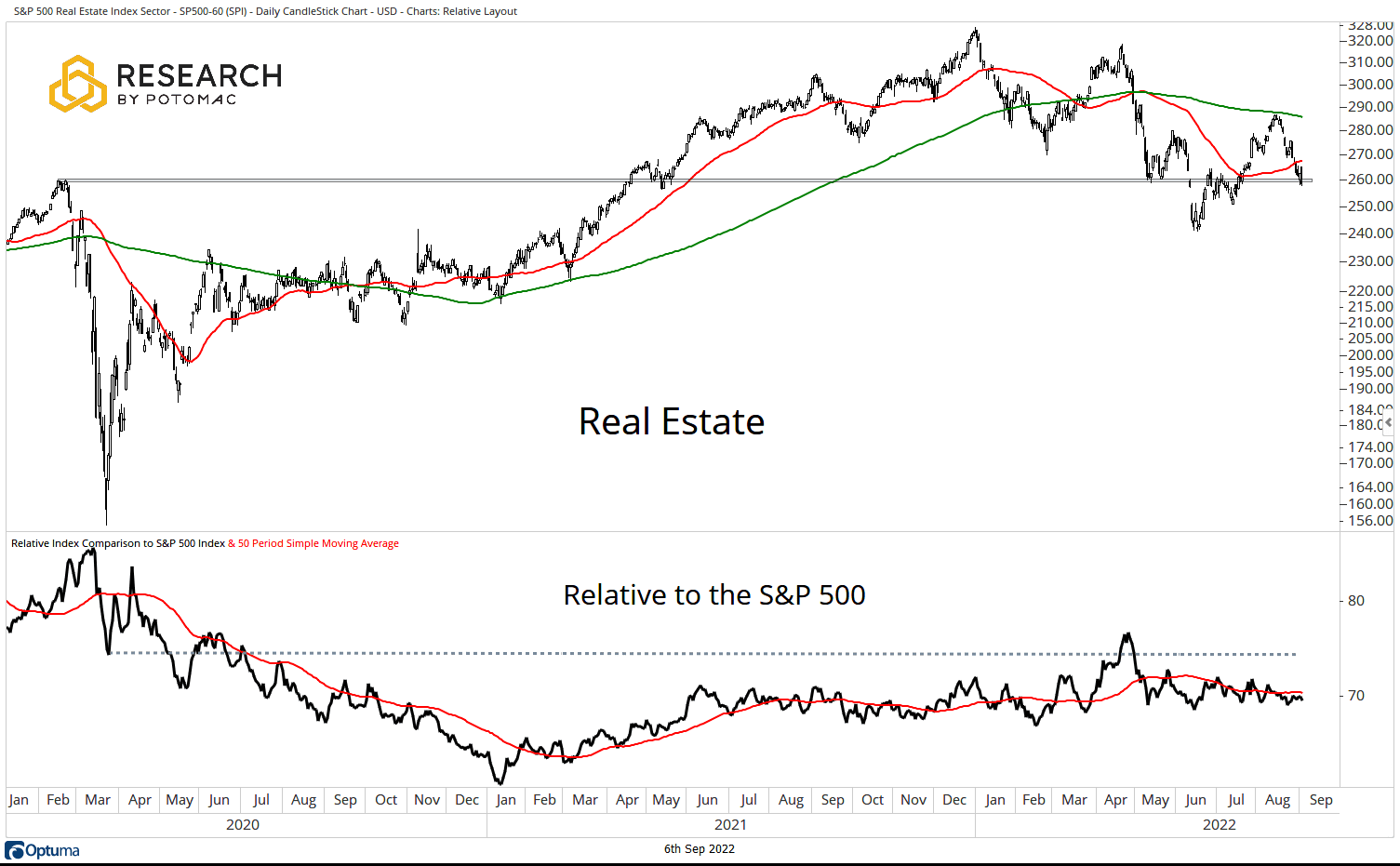
Take-Aways
We find it hard to make a strong bullish case for the equity market with Technology and Communication Services, which make up more than 32% of the index, in bearish trends below their 50 and 200-day moving averages. For investors who must maintain an equity position, Utilities and Energy remain the leadership, while Staples, Industrials, and Financials are sectors that qualify as being “less bad.”
Potomac Fund Management ("Company") is an SEC-registered investment adviser. SEC registration does not constitute an endorsement of the advisory firm by the SEC nor does it indicate that the advisory firm has attained a particular level of skill or ability. This information is prepared for general information only and should not be considered as individual investment advice nor as a solicitation to buy or offer to sell any securities. This material does not constitute any representation as to the suitability or appropriateness of any investment advisory program or security. Please visit our FULL DISCLOSURE page. The company does not make any representations or warranties as to the accuracy, timeliness, suitability, completeness, or relevance of any information prepared by any unaffiliated third party, whether linked to the Company website or incorporated herein, and takes no responsibility for any of this information. The views of the Company are subject to change and the Company is under no obligation to notify you of any changes. Different types of investments involve varying degrees of risk, and there can be no assurance that the future performance of any specific investment or investment strategy will be profitable or equal to any historical performance level.
